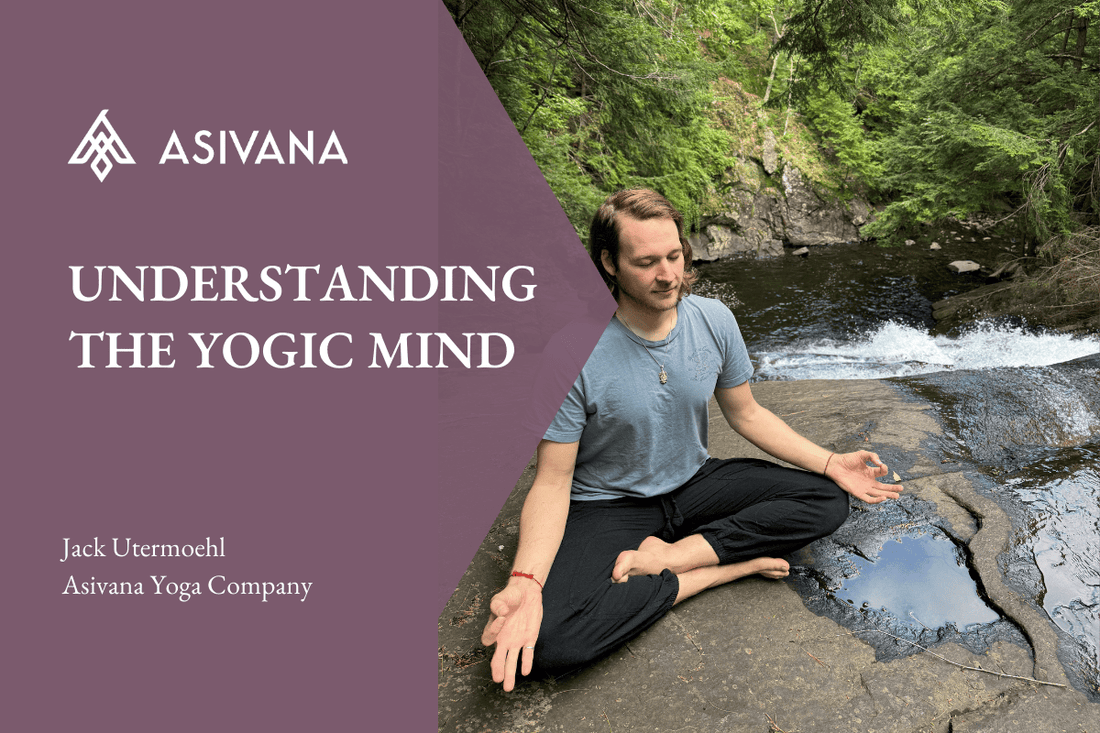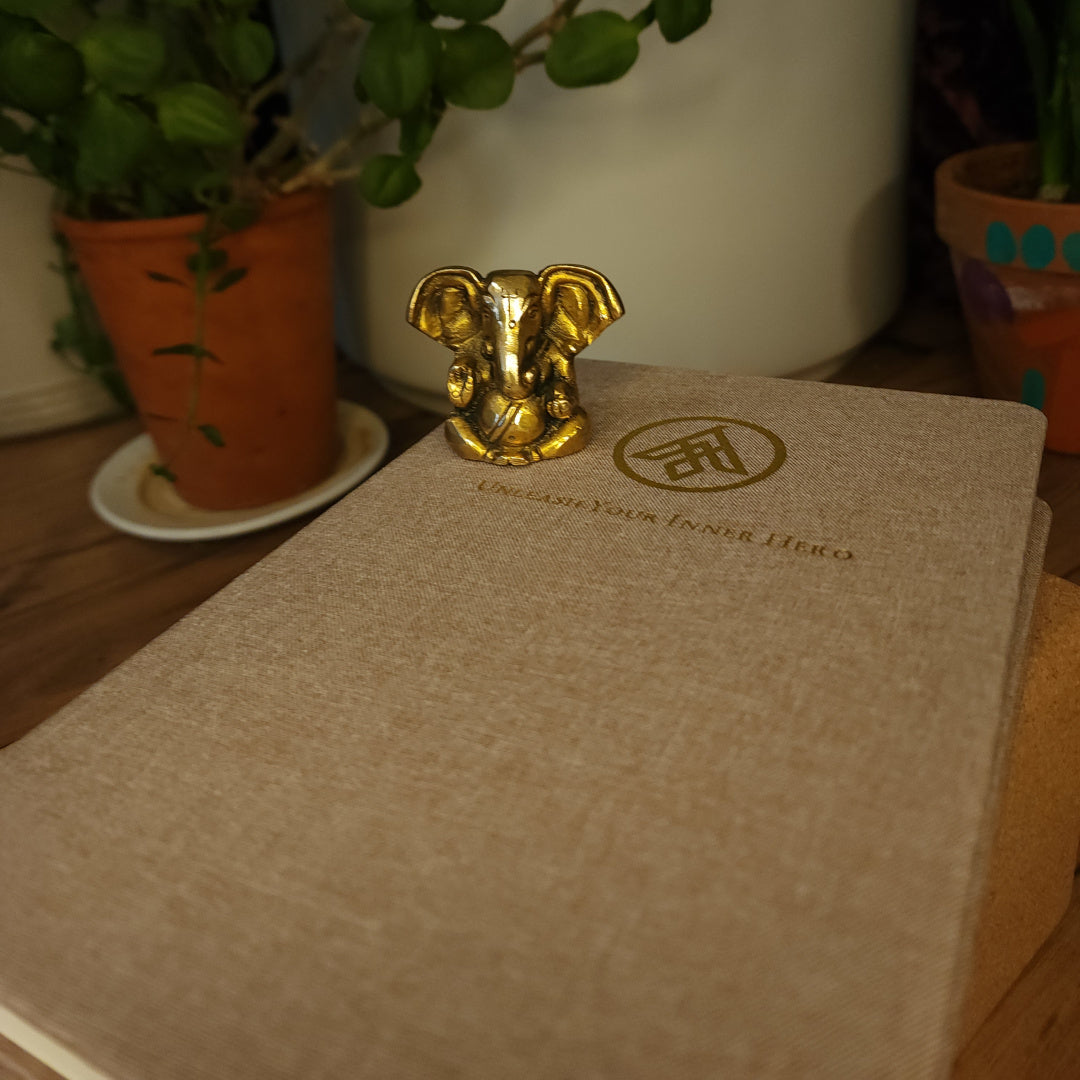
Understanding the Yogic Mind
Jack UtermoehlShare
The human mind is a complex and intricate mechanism that plays a central role in our perception, emotions, and actions. Yogic philosophy provides a detailed understanding of the mind, breaking it down into several key components.
In this article, we will explore four essential aspects of the mind as conceptualized in yoga philosophy:
- Mind
- Intellect
- Ego
- Memory
Together, these four elements form what is known as the antahkarana (inner instrument), guiding both our inner experience and our responses to the external world.
Understanding these components provides valuable insights into our patterns of thinking and behaving, allowing us to work toward greater inner balance and clarity. It also offers practical tools to align ourselves more closely with our true nature and purpose.
As we examine each of these concepts in detail, we will also draw parallels with modern understandings of psychology and neuroscience, highlighting the timeless relevance of this ancient knowledge.
The Antahkarana (Inner Instrument)
The antahkarana is a term used to refer to the internal apparatus of the human mind. Unlike the modern concept of the mind as a single unified entity, yogic philosophy views the mind as composed of different facets, each serving a distinct function. These facets are manas, buddhi, ahamkara, and citta.
Manas (mind) is responsible for processing sensory input and generating thoughts.
Buddhi (intellect) is the discriminative faculty that helps us make decisions based on reason and wisdom.
Ahamkara (ego) is the sense of individuality or ego, giving us our personal identity.
Citta (memory) is the storehouse of all memories and impressions which shape our perceptions.
The antahkarana acts as a bridge between the atman (the true self or soul) and the external world, enabling us to interact with the environment and make sense of our experiences. Each component of the antahkarana plays a crucial role in this process, contributing to both our internal dialogue and our outward behavior.

The Four Components of the Inner Mind
Manas (Sensing Mind)
Manas is the part of the mind responsible for managing sensory data and thought processes. It receives input from the senses and organizes this information, determining what requires attention and action. In many ways, manas is the reactive and habitual part of the mind, always processing new stimuli and generating automatic responses.
Reactive Nature: For example, when we hear a loud noise, it is manas that immediately responds by directing our attention to the source of the sound. This reactivity is crucial for survival, as it allows us to swiftly interpret and respond to environmental cues.
Association with Desires: Manas is also the aspect of the mind most influenced by desires and external stimuli. It is constantly seeking gratification through sensory experiences, which can lead to a restless state of mind if not regulated.
In modern psychology, manas could be compared to the conscious mind and the working memory, which are involved in processing immediate experiences. Techniques such as pratyahara (withdrawal of the senses) help in gaining control over manas, allowing the mind to become less reactive and more focused.
Buddhi (Intellect or Discriminative Faculty)
Buddhi represents the intellect and is responsible for discrimination, judgment, discernment, and knowledge. It is the higher faculty of the mind that helps us differentiate between right and wrong, real and unreal, beneficial and harmful. Unlike manas, which is reactive, buddhi is reflective, deliberate, and decisive.
Object Identification: Buddhi draws from memory and uses this information to delineate objects. For example, instead of a crafted pile of wood you see a chair. This categorization is what allows us to function in the world by identifying objects by their function or use.
Role in Decision-Making: Buddhi is instrumental in decision-making, as it evaluates different options and determines the most appropriate course of action. For example, when faced with a moral dilemma, it is buddhi that weighs the consequences and directs us toward ethical behavior.
Higher Reasoning: Buddhi is also associated with insight and higher reasoning. It plays a key role in spiritual growth, as it is through buddhi that we can recognize our true nature beyond the ego and sensory experiences. This is how The Buddha found his enlightenment and why he earned the honorific title “The Buddha”.
In modern terms, buddhi can be likened to the executive function of the brain, which is associated with reasoning, planning, and decision-making. Strengthening buddhi is a key goal of many yogic practices, particularly svadhyaya (self-study), meditation, and the study of sacred texts, which help cultivate discernment and wisdom.
Ahamkara (Ego or I-Maker)
Ahamkara is the ego or the sense of individual identity. It is the aspect of the mind that creates the feeling of separateness by identifying with the body, thoughts, emotions, and experiences. Ahamkara gives us the sense of “I” and “mine,” forming the basis of our personal identity.
Attachment and Suffering: Ahamkara often leads to attachment and identification with material possessions, roles, and relationships, which can be a source of suffering. For instance, when we identify strongly with our job title, any threat to that role can lead to anxiety and insecurity. This identification is a major barrier to spiritual progress, as it reinforces the illusion of separateness from others and from the true self.
The Role of Ego in Daily Life: While ahamkara can be a source of attachment and suffering, it also plays an essential role in helping us navigate the world. A healthy sense of ego allows us to function effectively, set boundaries, and pursue our goals.
In modern psychology, ahamkara is similar to the concept of the ego as described by Freud, which mediates between our instincts, our conscience, and the external world. Yogic practices such as bhakti (devotion) and karma yoga (selfless service) are effective in transcending (not eliminating) the ego, helping practitioners to move beyond the limited sense of self.
Citta (Memory or Subconscious Mind)
Citta is the storehouse of all memories, impressions (samskaras), and latent tendencies (vasanas). It is the subconscious mind that holds the accumulated experiences of the past, which influence our present thoughts, emotions, and behaviors.
Influence of Samskaras: Citta contains samskaras, or the subtle impressions left by past actions and experiences. These impressions shape our habits, desires, and responses. For example, a person who has repeatedly experienced rejection may develop a samskara of unworthiness, which influences their behavior in relationships.
Purification of Citta: The goal of yoga is to purify citta by removing these impressions, thereby reducing the influence of past conditioning also known as deprogramming youself. Practices like asanas (physical postures), pranayama (breath control), and dhyana (meditation) help in cleansing citta, making it clearer and more receptive to higher knowledge.
In modern psychology, citta can be compared to the subconscious mind, which stores repressed memories and influences behavior outside of conscious awareness. Techniques like meditation and introspection help bring these subconscious patterns into conscious awareness, allowing us to address and transform them.

Interrelationship Between the Four Components
The four components of the antahkarana—manas, buddhi, ahamkara, and citta—work together to create our inner experience and influence our actions. Understanding the interplay between these components is crucial for gaining mastery over the mind and achieving self-realization.
Manas and Buddhi: Manas gathers information from the senses, while buddhi evaluates and interprets this information. For example, manas may perceive a situation as threatening, but buddhi can discern whether the threat is real or imagined, guiding an appropriate response.
Ahamkara and Citta: Ahamkara identifies with the impressions stored in citta, reinforcing the sense of individuality. For instance, if citta holds a memory of failure, ahamkara may develop an identity around being incapable, which then influences future actions.
An imbalance in any of these components can lead to psychological distress. When manas is overly reactive, the mind becomes restless. When ahamkara is too dominant, we become overly attached to our egoic identity. Cultivating a balanced buddhi helps regulate these tendencies and leads to greater inner peace.
Practical Applications in Yoga and Meditation
Yogic practices provide practical tools for balancing and harmonizing the four components of the antahkarana. Each practice targets a specific aspect of the mind, helping practitioners achieve greater self-awareness and mental clarity.
Balancing Manas
The restless and reactive nature of manas can create distractions and disturbances in the mind. To bring balance to manas, yogic practices focus on calming sensory inputs and cultivating a state of focused awareness.
Pratyahara (Withdrawal of Senses): Pratyahara is the practice of withdrawing the senses from external objects to calm manas. By reducing sensory input, we can quiet the reactive mind and direct our focus inward.
Mindfulness: Practicing mindfulness helps in observing the activity of manas without getting caught.
Strengthening Buddhi
Developing a strong and discerning buddhi is essential for making wise decisions and attaining clarity of thought. Practices aimed at enhancing buddhi emphasize introspection and self-study.
Svadhyaya (Self-Study): Engaging in self-study, including the study of scriptures, strengthens buddhi by providing a higher perspective and guiding principles for making wise decisions.
Meditation: Meditation is one of the most effective ways to enhance buddhi. By sitting in meditation, we develop the ability to observe our thoughts and make conscious choices, rather than reacting automatically.
Related: Abstract Thought Meditation
Transcending Ahamkara
To transcend the limitations of ahamkara, yogic practices encourage humility, surrender, and the dissolution of the ego through selfless action and devotion.
Bhakti (Devotion): Devotional practices, such as chanting and prayer, help transcend the ego by fostering a sense of surrender and connection to something greater than oneself.
Karma Yoga (Selfless Service): Karma yoga involves performing actions without attachment to the outcome. By acting selflessly, we reduce the grip of ahamkara and cultivate humility.
Purifying Citta
Purifying citta involves addressing the deep-seated impressions and tendencies stored in the subconscious. This process helps to clear the mind and open it to higher knowledge.
Asanas (Physical Postures): Practicing asanas helps release physical tension and emotional blockages stored in citta. Each posture has a specific effect on the body and mind, aiding in the purification process.
Pranayama (Breath Control): Pranayama techniques, such as nadi shodhana (alternate nostril breathing), help clear the subtle energy channels and remove impressions from citta, leading to greater mental clarity.

Insights from Yogic Texts
The Yoga Sutras of Patanjali
The Yoga Sutras define yoga as the stilling of the fluctuations of citta. This principle, encapsulated in the phrase yogas citta vrtti nirodhah, highlights the goal of attaining a mind free from distractions and disturbances.
Patanjali provides an eightfold path, or ashtanga yoga (now more commonly known as a lineage founded by Pattabhi Jois), which serves as a structured framework for self-mastery and achieving higher states of consciousness. Practices such as pratyahara (sense withdrawal), dharana (concentration), and dhyana (meditation) directly address the management of manas, buddhi, ahamkara, and citta.
The text emphasizes developing a clear and tranquil mind as a prerequisite for spiritual realization, underscoring the importance of inner discipline and regular practice.
The Bhagavad Gita
The Gita introduces the concept of buddhi yoga, or the yoga of discernment, urging practitioners to act with wisdom and non-attachment. By cultivating buddhi, individuals can transcend ego-driven desires and align their actions with higher spiritual goals.
The Gita explores the role of manas in controlling the senses and highlights the necessity of regulating ahamkara to overcome attachment and achieve liberation.
Through vivid metaphors, such as the chariot analogy, the Gita illustrates how the mind (manas), intellect (buddhi), and ego (ahamkara) interact, offering timeless lessons on self-mastery and balanced living.
Modern Relevance
That’s all well and good but how does this apply to my life right now?
Stress Management in a Distracted World
In today’s fast-paced environment, manas is frequently overwhelmed by excessive sensory input and constant stimuli. Practices like pratyahara and mindfulness help calm this reactivity, reducing stress and fostering mental clarity. Techniques such as breathwork and mantra meditation offer immediate, practical solutions for managing anxiety.
Emotional Regulation and Relationships
The dominance of ahamkara in modern life often leads to over-identification with roles, possessions, or relationships, resulting in emotional instability. Recognizing the ego’s influence allows individuals to let go of attachments and approach relationships with greater compassion and understanding. Yoga’s emphasis on humility and selfless service provides a pathway for emotional balance.
Enhancing Decision-Making
The cultivation of buddhi equips individuals with the tools to make thoughtful, deliberate choices. In an era of information overload, where impulsive decisions are common, meditation and self-inquiry strengthen the intellect, enabling clear and rational thought processes. These practices have been shown to improve focus and executive functioning, aligning ancient wisdom with modern neuroscience.
Addressing Subconscious Patterns
The insights of citta align closely with modern psychology’s understanding of the subconscious mind. By exploring stored impressions and tendencies, individuals can identify and transform limiting beliefs. Techniques like journaling, guided visualization, and therapy, combined with yogic methods such as asana and pranayama.
Integration of Antahkarana the Inner Mind
Understanding manas, buddhi, ahamkara, and citta is a journey of self-discovery. These four components of the antahkarana work together to shape our thoughts, behaviors, and experiences. By gaining insight into their functions and interrelationships, we can cultivate greater clarity, balance, and wisdom in our lives.
Yoga offers practical tools for harmonizing these aspects of the mind, helping us move beyond the limitations of the ego and connect with our true nature. Whether through meditation, selfless service, or the study of sacred texts, each practice brings us closer to the ultimate goal of inner peace and spiritual liberation.










